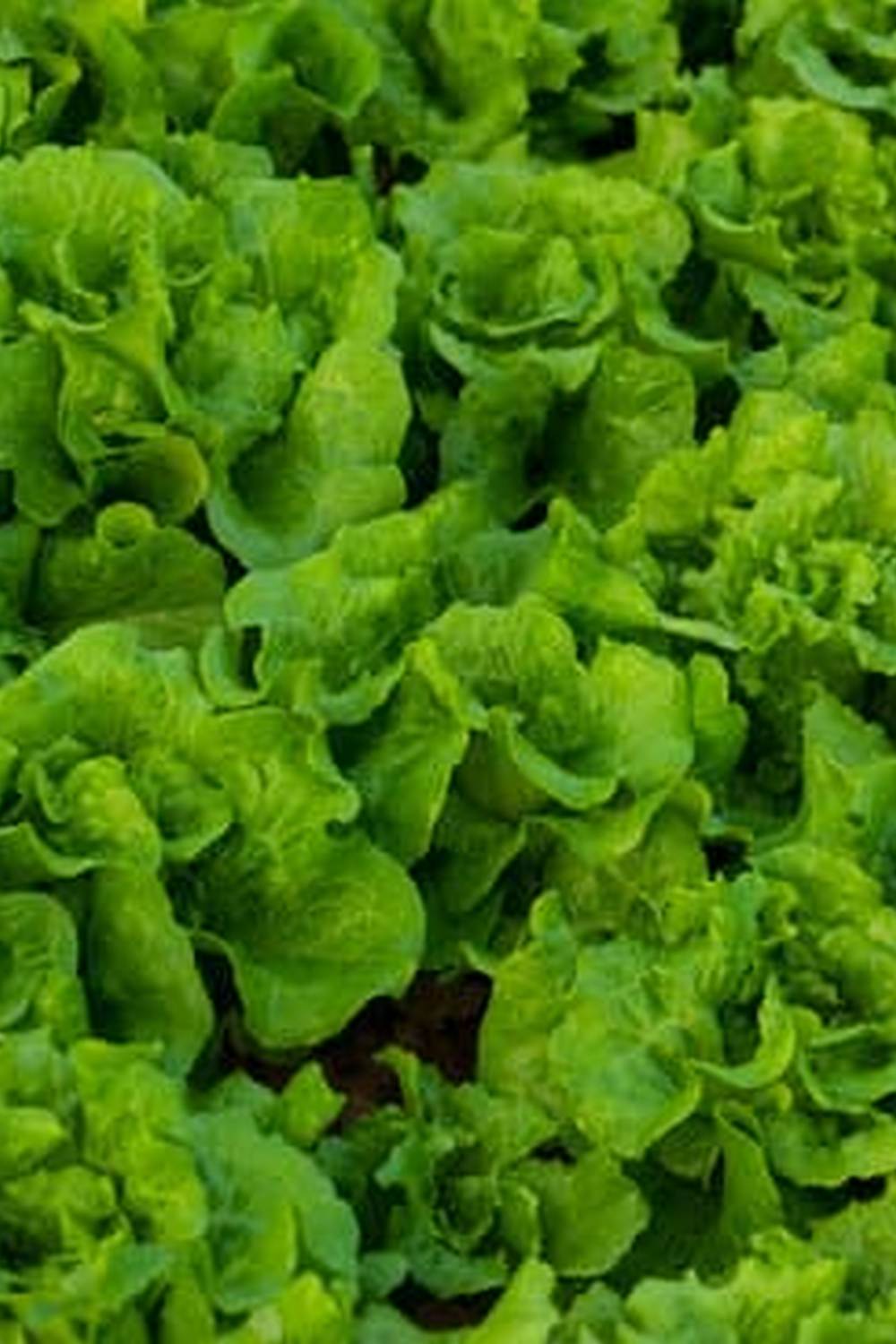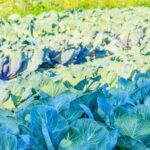Northeast Florida offers a unique climate and soil conditions that present both opportunities and challenges for vegetable gardening. With its warm temperatures, ample sunlight, and sandy soil, this region is well-suited for cultivating a wide variety of vegetables.
In this article, we will explore the ins and outs of vegetable gardening in Northeast Florida, including the best vegetables to grow, choosing the right location for your garden, soil preparation, planting and maintenance tips, dealing with challenges, harvesting and preserving your garden’s bounty, as well as community resources for support.
The climate in Northeast Florida is characterized by hot summers and mild winters, making it an ideal environment for growing certain types of vegetables. Additionally, the sandy soil prevalent in this region provides good drainage for plants but may require additional amendments to ensure optimal conditions for successful growth. Vegetable gardening plays a vital role in Northeast Florida not only as a source of fresh produce but also as a means of promoting sustainability and self-sufficiency.
In the following sections, we will delve into the specifics of what vegetables thrive in Northeast Florida’s climate and how to care for them. We will also discuss important factors to consider when selecting the right location for your garden, preparing the soil for optimal growth, planting and maintaining your vegetable garden throughout the seasons, tackling common challenges such as pests and diseases unique to this area, as well as tips on harvesting and preserving your bountiful harvest.
Finally, we will provide information on valuable community resources available to support vegetable gardeners in Northeast Florida.
Best Vegetables to Grow in Northeast Florida
When it comes to vegetable gardening in Northeast Florida, choosing the right vegetables to grow is crucial for success. The climate and soil conditions in this region make it ideal for growing a variety of vegetables that thrive in warm temperatures and well-drained soil. Here are some of the best vegetables to consider for your Northeast Florida vegetable garden:
- Tomatoes: Tomatoes are a popular choice for Northeast Florida vegetable gardens. They require plenty of sunlight and well-drained soil to thrive. Consider planting cherry tomatoes, beefsteak tomatoes, or heirloom varieties.
- Peppers: Bell peppers, jalapenos, and banana peppers are excellent options for Northeast Florida gardens. These vegetables need full sunlight and warm temperatures to produce a bountiful harvest.
- Squash: Both zucchini and yellow squash are well-suited for the Northeast Florida climate. Plant these vining vegetables in nutrient-rich soil with good drainage.
- Green Beans: Green beans are a versatile vegetable that grows well in Northeast Florida. Whether you prefer bush beans or pole beans, they can be easily grown in the region’s warm weather.
In addition to these options, other suitable vegetables for Northeast Florida include okra, cucumbers, eggplant, and sweet potatoes. When selecting which vegetables to grow, it’s essential to consider the specific requirements each plant has for sunlight, water, and soil nutrients.
To ensure success with your chosen vegetables, be sure to follow proper planting techniques and provide ongoing care throughout the growing season using appropriate fertilization and pest management practices specific to the climate of northeast florida vegetable gardening.
Choosing the Right Location for Your Vegetable Garden
When it comes to vegetable gardening in Northeast Florida, choosing the right location for your garden is crucial for the success of your crops. Factors such as sunlight, drainage, and soil quality play a significant role in determining the best location for your vegetable garden.
Factors to Consider
One of the most important factors to consider when selecting a location for your vegetable garden in Northeast Florida is sunlight. Most vegetables require at least 6-8 hours of direct sunlight each day to thrive. Be sure to choose a spot in your yard that receives plenty of sunlight throughout the day, especially during the growing season.
Soil Quality and Drainage
In addition to sunlight, soil quality and drainage are also important considerations for your vegetable garden. Northeast Florida soils can vary greatly, so it’s essential to have your soil tested before planting. You’ll want to ensure that the soil pH is suitable for growing vegetables and that it has proper drainage to prevent waterlogging, which can lead to root rot and other issues.
Other Important Considerations
Furthermore, other important considerations when choosing a location for your vegetable garden include accessibility to water sources, proximity to your home for convenience, and protection from strong winds or potential flooding. By carefully considering these factors, you can select the ideal location for your Northeast Florida vegetable garden and set yourself up for a successful growing season.
Preparing the Soil for Vegetable Gardening
In Northeast Florida, the success of your vegetable garden heavily relies on the quality of your soil. The region’s soil tends to be sandy and acidic, which can present challenges for growing vegetables. However, with proper preparation and care, you can optimize your soil for successful vegetable gardening.
One important step in preparing the soil for vegetable gardening in Northeast Florida is to conduct a soil test. This will help you understand the pH level of your soil and identify any nutrient deficiencies. Based on the results, you can then make informed decisions about what amendments or fertilizers are needed to create the optimal growing conditions for your vegetables.
Adding organic matter to your soil is crucial for improving its fertility and structure. Compost, well-rotted manure, or peat moss can be worked into the soil to increase its ability to retain moisture and nutrients. Additionally, incorporating cover crops such as clover or rye during the off-season can help prevent erosion and add valuable organic material to the soil.
Proper soil maintenance is also essential for successful vegetable gardening in Northeast Florida. Regularly testing and amending your soil based on its needs will ensure that your vegetables have access to the necessary nutrients for healthy growth. Mulching around plants can help retain moisture and regulate temperatures, while minimizing weed growth.
| Soil Preparation Tips | Data |
|---|---|
| Conduct a Soil Test | Identify pH level and nutrient deficiencies |
| Add Organic Matter | Compost, manure, peat moss |
| Maintain Soil Quality | Regular testing, amending, mulching |
Planting and Maintaining Your Vegetable Garden
Timing and Best Practices for Planting Vegetables in Northeast Florida
In Northeast Florida, the climate and weather patterns play a crucial role in determining the best timing for planting vegetables. It is important to be mindful of the average last spring frost date and the first fall frost date when planning your planting schedule. Some vegetables, like tomatoes and peppers, require a longer growing season and should be started indoors or in a greenhouse before being transplanted outdoors.
Other vegetables, such as lettuce and spinach, are more tolerant of cooler temperatures and can be planted earlier in the year. By understanding the unique climate of Northeast Florida, gardeners can make informed decisions about when to plant their vegetable garden for optimal success.
Watering, Fertilizing, and Pest Management Tips
Proper maintenance of a vegetable garden is essential for healthy plant growth and prolific yields. In Northeast Florida’s warm and humid climate, regular watering is critical to prevent drought stress in vegetable plants. Drip irrigation systems or soaker hoses can help deliver consistent moisture to the garden while minimizing water waste. Additionally, applying organic mulch around plants can aid in retaining soil moisture and reducing weed competition.
Fertilizing is another key aspect of maintaining a thriving vegetable garden. Conducting a soil test can provide valuable information about the nutrient levels in your garden’s soil, allowing you to amend as needed with organic fertilizers or compost.
Finally, pest management is an ongoing concern for vegetable gardeners in Northeast Florida. Common pests such as aphids, caterpillars, and whiteflies can damage crops if not properly managed. Implementing integrated pest management strategies that combine mechanical controls, biological controls, and least-toxic pesticide options can help protect your vegetable garden from damaging insect infestations while minimizing harm to beneficial insects.
Intercropping and Companion Planting Strategies
In addition to timing, proper care of your Northeast Florida vegetable garden also involves implementing intercropping and companion planting techniques that maximize space utilization and pest deterrents. Carrots are often intercropped with onions because they benefit each other by repelling pests or inhibiting disease when grown together.
Similarly, basil is commonly used as a companion plant for tomatoes due to its ability to improve tomato flavor while also repelling certain insect pests that affect tomato plants. By utilizing these strategies along with proper timing and maintenance practices mentioned earlier in this section, Northeast Florida vegetable gardeners can increase their chances of success with their crops.
Overall, planting and maintaining a successful vegetable garden in Northeast Florida requires careful consideration of the unique climate conditions along with adherence to best practices for watering, fertilizing, pest management, intercropping, companion planting strategies specific to this region.
Dealing With Challenges in Northeast Florida Vegetable Gardening
When it comes to vegetable gardening in Northeast Florida, there are several common challenges that gardeners may encounter. From pests to weather conditions, it’s essential to be prepared and have strategies in place for managing these issues. Here are some of the most common challenges and how you can address them:
1. Pests: Northeast Florida is home to a variety of pests that can wreak havoc on your vegetable garden. Some of the most common pests include aphids, caterpillars, and whiteflies. To manage pest issues, consider using natural methods such as introducing beneficial insects like ladybugs or using insecticidal soaps. Additionally, practicing proper crop rotation and maintaining healthy soil can help reduce pest populations.
2. Weather: The climate in Northeast Florida can be quite unpredictable, with hot and humid summers and mild winters. This can create challenges for vegetable gardening, especially when it comes to extreme temperatures and heavy rainfall. Consider using shade cloth during the hotter months to protect your plants from sun damage, and be sure to implement proper drainage systems to prevent waterlogged soil during rainy periods.
3. Disease Management: Certain plant diseases thrive in the humid conditions of Northeast Florida, including fungal diseases like powdery mildew and downy mildew. To prevent disease issues, make sure your garden has good air circulation by spacing plants properly and pruning as needed. Additionally, choosing disease-resistant varieties of vegetables can help minimize the risk of outbreaks.
By being proactive in addressing these challenges through careful planning, thoughtful gardening practices, and seeking support from local resources such as gardening clubs or extension offices, you can overcome the obstacles commonly associated with vegetable gardening in Northeast Florida.
Harvesting and Preserving Your Vegetable Garden
Once you have nurtured your vegetable garden, it is time to reap the rewards of your hard work. In Northeast Florida, the climate allows for a variety of vegetables to flourish, providing an abundant harvest for you and your family.
It is crucial to know when and how to harvest your vegetables in order to enjoy them at their peak freshness. The right techniques for preserving your garden’s bounty will allow you to savor the flavors of your homegrown produce all year round.
When it comes to harvesting, timing is key. Different vegetables have specific indicators that signal they are ready for harvest. For example, tomatoes should be harvested when they are firm and fully colored, while leafy greens like lettuce and spinach are best picked when they are young and tender. As for preserving your harvest, there are various methods such as canning, freezing, drying, or pickling that can extend the shelf life of your vegetables.
It is important not to let your efforts go to waste by not knowing how to properly store and preserve your harvest. Whether you choose to freeze excess vegetables for use in soups and stews or pickle some cucumbers for homemade pickles, understanding these preservation techniques will ensure that none of your hard-earned produce goes unused.
| Vegetable | Harvest Time |
|---|---|
| Tomatoes | Firm and fully colored |
| Lettuce & Spinach | Youung & tender |
| Cucumbers | Ideal size for pickling |
Community Resources for Northeast Florida Vegetable Gardeners
In conclusion, the northeast Florida climate and soil conditions provide a unique opportunity for vegetable gardening. With the right knowledge and resources, gardeners in this region can successfully grow a bountiful harvest of delicious and nutritious vegetables. By choosing the right location, preparing the soil, planting and maintaining the garden, and utilizing community resources, gardeners can overcome common challenges and enjoy a thriving vegetable garden.
Local gardening clubs, resources, and events play a crucial role in supporting vegetable gardeners in northeast Florida. These community resources provide valuable information, networking opportunities, and support for those looking to improve their gardening skills. Whether it’s through workshops, online forums, or shared experiences at local events, connecting with other vegetable gardeners can offer insights and advice that enhance the success of one’s own garden.
In addition to community resources, seeking out further support and knowledge for northeast Florida vegetable gardening is essential for continued success. There are numerous educational opportunities available through local universities or extension services that focus on specific gardening techniques tailored to this region. By staying informed about best practices for northeast Florida vegetable gardening, both novice and experienced gardeners can continue to improve their skills and yield better harvests year after year.
Frequently Asked Questions
What Is the Best Month to Plant Vegetables in Florida?
The best month to plant vegetables in Florida is typically in late winter or early spring. This allows the plants to establish themselves before the heat of summer arrives, and it also avoids potential frost damage in the winter.
When Should I Start My Garden in North Florida?
In North Florida, you can start your garden as early as February or March. However, it’s important to pay attention to local climate patterns and frost dates to avoid any potential damage to your young plants.
Can You Have a Vegetable Garden Year-Round in Florida?
Yes, it is possible to have a vegetable garden year-round in Florida, especially in the southern parts of the state where the climate is warmer. With careful planning and selection of appropriate vegetables for each season, you can enjoy a productive garden throughout the year.

If you’re looking to get into vegetable gardening, or are just looking for some tips on how to make your current garden better, then you’ve come to the right place! My name is Ethel and I have been gardening for years. In this blog, I’m going to share with you some of my best tips on how to create a successful vegetable garden.





